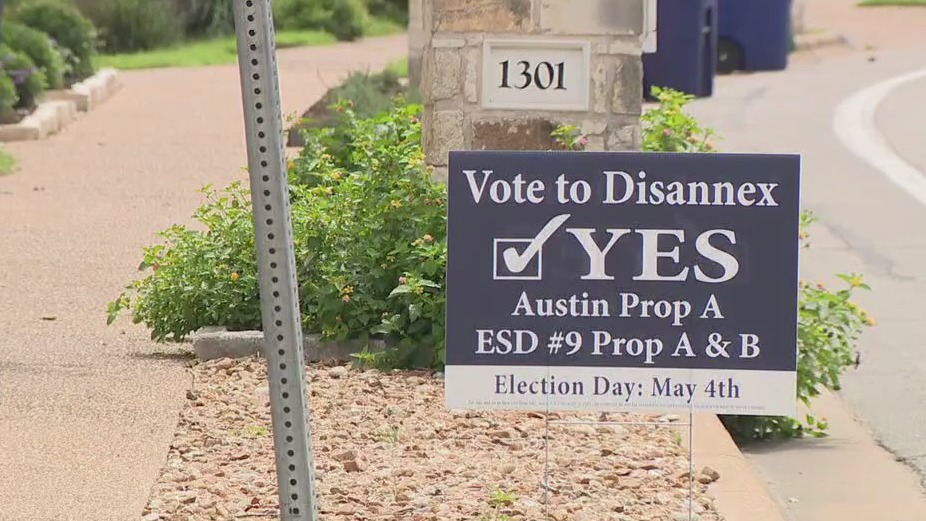World
Asia lobby group pushes for easing of China’s offshore listing rules
/cloudfront-us-east-2.images.arcpublishing.com/reuters/2SQ7YNBYKFLO7E7XXQ74TQ7RRM.jpg)
HONG KONG, June 27 (Reuters) – China’s new offshore listing rules for domestic companies have left bankers and lawyers who work on listings unsure how to take on liabilities and how to avoid breaching tightened confidentially rules, Asia’s largest financial lobby group said on Tuesday.
China’s long-awaited rules for offshore stock exchange listings come into effect on March 31 as part of Beijing’s regulatory tightening on cross-border listings after years of a laissez-faire approach.
Lobby group ASIFMA (the Asia Securities Industry and Financial Markets Association) counts leading global investment banks Goldman Sachs (GS.N), JPMorgan Chase & Co (JPM.N), and UBS Group (UBSG.S) among more than 170 financial firms who are association members.
There is “a lot of nervousness” among the bankers, lawyers and accountants who are now required to formally pledge with China’s securities regulator within three days of an overseas listing that they guarantee “truthfulness, accuracy, completeness” of their work, Lyndon Chao, managing director of ASIFMA’s equities and post-trade division, told Reuters.
ASIFMA voiced those concerns to the China Securities regulatory Commission (CSRC) at a recent meeting, Chao said, adding the watchdog recognises the challenges arising from the new listing regime and has promised efforts to offer a solution.
The CSRC in a parallel confidentiality rule issued at the end of February also demanded that “working papers” – documents produced onshore by banks and other service providers during the listing process – be retained onshore, as Beijing stepped up oversight of all types of cross-border data transfers.
Chao said that the concept of such papers is vaguely defined, and also gave rise to disputes among investment banks and law firms over which side was primarily responsible for storing the documents.
He added that keeping the information entirely onshore would be in conflict with requirements by offshore authorities such as those in New York and Hong Kong, the top two listing venues for Chinese companies looking to raise capital via equity offerings.
“It’s not good for China. It’s not good for Chinese companies who need to seek capital from the world,” Chao said.
Reporting by Selena Li, additional reporting by Scott Murdoch and Kane Wu; Editing by Sumeet Chatterjee and Susan Fenton
Our Standards: The Thomson Reuters Trust Principles.

World
Tech compliance reports, Newsletter

This week’s key events presented by senior tech and industry reporter Cynthia Kroet
Key diary dates
Monday 6- Wednesday 8 May: High-Level Conference on Antimicrobial Resistance (AMR) organised by the Belgian presidency of the Council of the EU.
Monday 6 May: Deadline for online platforms regulated under the Digital Services Act to submit transparency reports.
Tuesday 7 May: NGO Seas at Risk to publish report on under-sea mining.
In spotlight
EU platform rules return to the spotlight this week, since today (6 May) is the deadline for the largest online platforms – those with more than 45 million users per month – to hand in their transparency reports under the Digital Services Act (DSA).
It’s the second batch of reports after the stringent rules started applying to the likes of Facebook, Amazon and TikTok last August.
With the submission of the first reports in October, platforms were scrutinised over the low number of content moderators they had in some of the smaller EU member states. Facebook has a single employee looking at Maltese content, and three in Estonia, claiming that much of the process is automated. In comparison, TikTok, which has fewer users per month, has six people looking at Estonian content and none for Maltese.
In light of the latest DSA probes started by the European Commission last week: into Facebook’s and Instagram’s handling of disinformation and ability to stop Russian fake news, all eyes will be on platforms’ election preparedness. And it remains to be seen if the social media platforms have taken more action compared to half a year ago.
With just about a month to go to the European Parliament election, the Commission is trying to ramp up platform preparedness for the poll. Stress-tests last month (24 April) were designed to help mitigate risks that may impact the integrity of elections and their services, for example.
However, as the latest Facebook and Instagram probes show, the Commission largely counting on the willingness of mother company Meta to comply; since there is no deadline for when the probes might end.
Policy newsmakers
@Kergueno @Uspaskich
MEPs interests
MEPs collectively earn more than €8.6 million a year from outside jobs – including from private companies that also actively lobby on EU policy, according to a report published by Transparency International EU today (6 May). Topping the list is Lithuanian MEP Viktor Uspaskich, who declares €3,000,000 per year working for a company called Edvervita UAB. The group, including Raphaël Kergueno, senior policy officer at Transparency, has called for EU lawmakers to be banned from moonlighting, as figures show over two thirds of the 705 deputies disclose activities in addition to their core role.
Policy Poll
Should MEPs elected to the next European Parliament be permitted remuneration:
From MEP salary alone
From additional side jobs
Subscribe here to see the results of last week’s poll and stay informed on the latest EU policy developments with our weekly newsletter, “The Policy Briefing”. Your weekly insight on European rulemaking, policy issues, key events, and data trends.
Data brief
World
With help from AI, Randy Travis got his voice back. Here's how his first song post-stroke came to be
With some help from artificial intelligence, country music star Randy Travis, celebrated for his timeless hits like “Forever and Ever, Amen” and “I Told You So,” has his voice back.
In July 2013, Travis was hospitalized with viral cardiomyopathy, a virus that attacks the heart, and later suffered a stroke. The Country Music Hall of Famer had to relearn how to walk, spell and read in the years that followed. A condition called aphasia limits his ability to speak — it’s why his wife Mary Travis assists him in interviews. It’s also why he hasn’t released new music in over a decade, until now.
“What That Came From,” which released Friday, is a rich acoustic ballad amplified by Travis’ immediately recognizable, soulful vocal tone.
Cris Lacy, Warner Music Nashville co-president, approached Randy and Mary Travis and asked: “‘What if we could take Randy’s voice and recreate it using AI?,’” Mary Travis told The Associated Press over Zoom last week, Randy smiling in agreement right next to her. “Well, we were all over that, so we were so excited.”
“All I ever wanted since the day of a stroke was to hear that voice again.”
Lacy tapped developers in London to create a proprietary AI model to begin the process. The result was two models: One with 12 vocal stems (or song samples), and another with 42 stems collected across Travis’ career — from 1985 to 2013, says Kyle Lehning, Travis’ longtime producer. Lacy and Lehning chose to use “Where That Came From,” a song written by Scotty Emerick and John Scott Sherrill that Lehning co-produced and held on to for years. He believed it could best articulate the humanity of Travis’ idiosyncratic vocal style.
“I never even thought about another song,” Lehning said.
Once he input the demo vocal (sung by James Dupree) into the AI models, “it took about five minutes to analyze,” says Lehning. “I really wish somebody had been here with a camera because I was the first person to hear it. And it was stunning, to me, how good it was sort of right off the bat. It’s hard to put an equation around it, but it was probably 70, 75% what you hear now.”
“There were certain aspects of it that were not authentic to Randy’s performance,” he said, so he began to edit and build on the recording with engineer Casey Wood, who also worked closely with Travis over a few decades.
The pair cherrypicked from the two models, and made alterations to things like vibrato speed, or slowing and relaxing phrases. “Randy is a laid-back singer,” Lehning says. “Randy, in my opinion, had an old soul quality to his voice. That’s one of the things that made him unique, but also, somehow familiar.”
His vocal performance on “What That Came From” had to reflect that fact.
“We were able to just improve on it,” Lehning says of the AI recording. “It was emotional, and it’s still emotional.”
Mary Travis says the “human element,” and “the people that are involved” in this project, separate it from more nefarious uses of AI in music.
“Randy, I remember watching him when he first heard the song after it was completed. It was beautiful because at first, he was surprised, and then he was very pensive, and he was listening and studying,” she said. “And then he put his head down and his eyes were a little watery. I think he went through every emotion there was, in those three minutes of just hearing his voice again.”
Lacy agrees. “The beauty of this is, you know, we’re doing it with a voice that the world knows and has heard and has been comforted by,” she says.
“But I think, just on human terms, it’s a very real need. And it’s a big loss when you lose the voice of someone that you were connected to, and the ability to have it back is a beautiful gift.”
They also hope that this song will work to educate people on the good that AI can do — not the fraudulent activities that so frequently make headlines. “We’re hoping that maybe we can set a standard,” Mary Travis says, where credit is given where credit is due — and artists have control over their voice and work.
Last month, over 200 artists signed an open letter submitted by the Artist Rights Alliance non-profit, calling on artificial intelligence tech companies, developers, platforms, digital music services and platforms to stop using AI “to infringe upon and devalue the rights of human artists.” Artists who co-signed included Stevie Wonder, Miranda Lambert, Billie Eilish, Nicki Minaj, Peter Frampton, Katy Perry, Smokey Robinson and J Balvin.
So, now that “Where That Came From” is here, will there be more original Randy Travis songs in the future?
“There may be others,” says Mary Travis. “We’ll see where this goes. This is such a foreign territory. There’s likely more on the horizon.”
“We do have other tracks,” says Lacy, but Warner Music is being as selective. “This isn’t a stunt, and it’s not a parlor trick,” she added. “It was important to have a song worthy of him.”
World
A military court sentences 8 Congolese army soldiers to death for cowardice, other crimes

A military court in eastern Congo on Friday sentenced eight soldiers to death for cowardice and other crimes linked to fleeing the battlefield, as the government struggles to contain violence and attacks in the mineral-rich area where many armed groups operate.
In March, Congo lifted a more than 20-year moratorium on the death penalty, stating that those guilty of treason and espionage were able to get away without proper punishment. Human rights organizations criticized the decision.
BOMBING AT REFUGEE CAMP KILLS 5 PEOPLE, INCLUDING CHILDREN, IN EASTERN CONGO
Alexis Olenga, a lawyer for Paluku Olenga, one of the soldiers sentenced to death, said his client had not fled the battlefield because he was arrested in the area of his assignment.
A military court in eastern Congo has sentenced eight soldiers to death for cowardice and other crimes linked to fleeing the battlefield, as the government struggles to contain violence and attacks in the mineral-rich area where many armed groups operate. (Photo by Wang Xin/VCG)
“This is a monstrous decision, I believe we must immediately challenge it before the high military court,” he told The Associated Press.
The military court in Goma, the provincial capital of North Kivu, acquitted three other soldiers of all charges and released them.
Moïse Hangi, a civil society activist, told the AP that “instead of repairing our security apparatus, these kinds of decisions will increasingly weaken our army and make those on the lines of defense more fearful.”
The decades-long conflict in eastern Congo has produced one of the world’s worst humanitarian crises, with over 100 armed groups fighting in the region, most for land and control of mines with valuable minerals. Some are fighting to try to protect their communities.
Many groups are accused of carrying out mass killings, rapes and other human rights violations. The violence has displaced about 7 million people, many beyond the reach of aid.
-

 Politics1 week ago
Politics1 week agoColumbia University’s policy-making senate votes for resolution calling to investigate school’s leadership
-

 News1 week ago
News1 week agoBoth sides prepare as Florida's six-week abortion ban is set to take effect Wednesday
-

 Politics1 week ago
Politics1 week agoGOP Rep. Bill Posey won't seek re-election, endorses former Florida Senate President as replacement
-

 World1 week ago
World1 week agoBrussels, my love? MEPs check out of Strasbourg after 5 eventful years
-

 Politics1 week ago
Politics1 week agoHouse Republicans brace for spring legislative sprint with one less GOP vote
-

 World1 week ago
World1 week agoAt least four dead in US after dozens of tornadoes rip through Oklahoma
-

 World1 week ago
World1 week agoRussian forces gained partial control of Donetsk's Ocheretyne town
-

 Politics1 week ago
Politics1 week agoAnti-Trump DA's no-show at debate leaves challenger facing off against empty podium


















